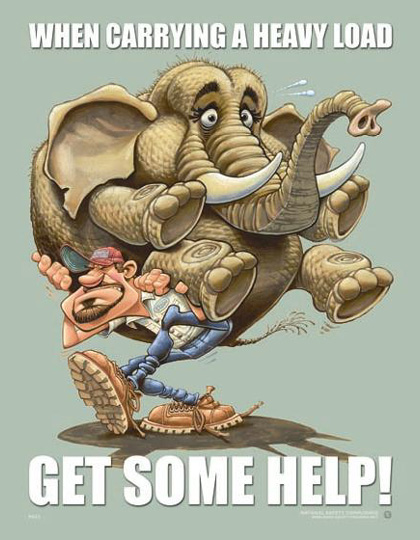About 80% of U.S. adults will experience lower back injuries or back pain over their lifetimes. These injuries can be caused by improper lifting techniques and overuse. If you use proper lifting techniques, and stretch and strengthen your back muscles, the risk of back injury can possibly be averted. When we have back pain, it is hard to think about your work or anything else. There are many occupations, such as nursing, factory and construction work, or standing all day in a store or bank, that puts significant demands on your back. I used to sit at a desk 8 hours a day, which can cause or worsen back pain. My posture didn’t help; I am sure I slumped at my desk, rather than sitting up straight. If you understand what causes your back pain and what you can do to prevent it, you should feel much better.
Here are some examples of the pressure put on our backs (literally):
Posture: Slouching exaggerates your back’s natural curves, which leads to muscle fatigue and injury.
Stress: Pressure at work and/or home can increase your stress level and lead to muscle tension and tightness, which adds to back pain.
Repetition: Repeating certain movements can lead to muscle fatigue or injury, particularly if you’re stretching to the limit of your range of motion or using awkward body positioning.
Force: Exerting too much force on your back – such as lifting or moving heavy objects – can cause injury. If possible, find a “work buddy.” It is less costly on the company to have two people lifting objects safely than paying for one person’s back injury. You may be “macho” when you are young and strong, but you will learn with age, that some of that lifting you did while you were stronger, comes back to haunt you later.
If you work in manufacturing or another industry where your day will be comprised of lifting or handling heavy objects, be sure to stretch before beginning your day. Make this type of exercise a regular part of your work routine. Taking a few minutes to do a few stretching or strengthening exercises can make all the difference in the rest of your day. Improper lifting of heavy objects causes many back injuries. It is best to use techniques that can support your back and prevent injury. The diagonal lift gives you a wide base of support, with more stability, energy and power. Bend your knees and squat down; keep your back arched and head up while lifting. This allows more power to come from the larger muscles of the legs, keeping the weight off your back. Keep the objects close to your body. Bad habits such as jerking, rushing, twisting or bending while lifting can cause serious injury.
Slips, trips, and falls are hazards that we all face, even at home, if we aren’t careful to keep clutter out of our paths. Wear the correct type of shoes to fit your job. If you are on your feet all day, you need good support, with non-slip soles if possible. Even women who thought they had to wear high heels in the office all day seem to be changing to lower, more comfortable shoes. Do pay attention to your posture. Just by changing positions often, and taking time to walk around and stretch, can make you feel better and help your back.
After reviewing scientific studies on the value of back support belts in preventing lower back injury, OSHA came to the conclusion that they had no conclusion. Therefore, they have not made wearing back belts mandatory. The use of back support belts and braces is optional, and many companies choose to supply them to their employees. If it is a matter of personal preference, and if it makes you feel more secure, try it. It certainly won’t hurt anything. Studies show that newer back supports are working. Employees have fewer back injuries and problems. These products also help employees retain proper posture and movement, two habits that have been shown to reduce back strain on the job.
Always listen to your body; it is usually a good warning system telling you to slow down. Take the time to examine your work environment and find ways to help you avoid risks that could be harmful. Talk to your supervisor if you feel the load is too much; there may be other options that will help not only you but your co-workers.
